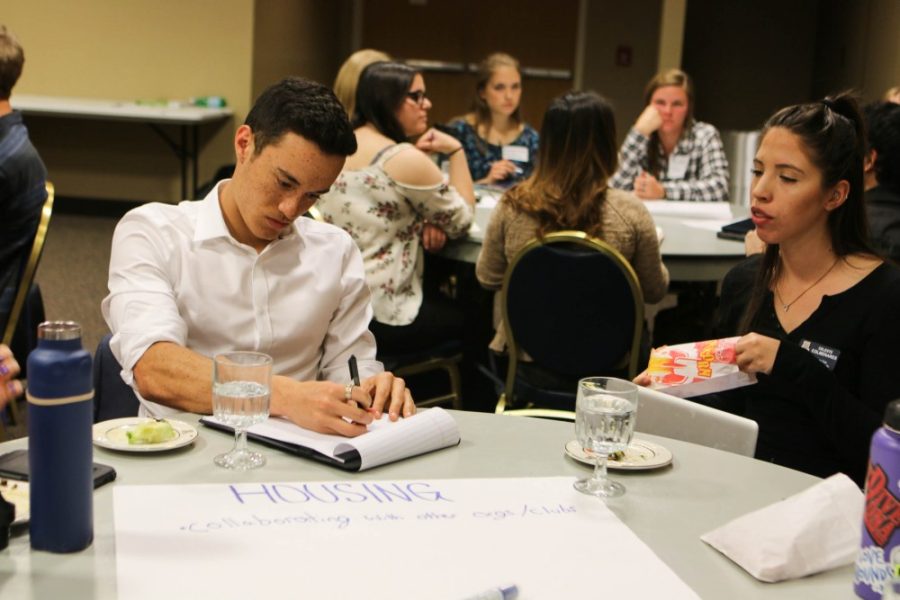Students from all three Arizona public universities discussed ideas at the 1st Annual Arizona Tri-University Student Sustainability Summit hosted by the University of Arizona Office of Sustainability on Feb. 23.
Each university was represented by a group of students and faculty involved in sustainability programs. Students were able to network, discuss collaboration ideas and learn from other universities about how they could improve sustainability on their campus.
Matt Lubisich, ASUA student body president, welcomed the students to the opening event. “So many different students from all three public universities discussing how we can move forward on sustainability is an incredible initiative,” Lubisich said.
To encourage networking, students from other universities sat down and introduced themselves.
“This event is all about connection. So if there’s anything we can do to build on strengths that any of the universities have to help out other universities, that’s what we need to try to do,” said Ben Champion, director of the UA Office of Sustainability.
In the first part of the event, each university presented their sustainability programs, clubs and any recent and past sustainable activities.
After presentations, each table was assigned a key sustainability topic during a breakout session and students sat at a table with a topic that interested them to meet with other students who shared their interest.
After the breakout session, table groups reported what they had learned and discussed to everyone else.
RELATED: New ride-sharing program RideAmigos rewards UA’s sustainable commuters
Stanley Wong, UA student and chair of the Energy and Climate Committee for Students for Sustainability, said that the summit was a learning experience.
“Both NAU and ASU have so much going on in their sustainability programs that we could improve on,” Wong said.
Ellen Vaughan, manager of the Office of Sustainability at Northern Arizona University, was interested by how similar all three universities approached sustainability.
“We all do green games, collaborate with athletics, have gardens, work to have a sustainable move-out at the end of the semester,” Vaughan said.
“I was interested by how ASU framed their goals in a positive way,” Vaughan said. “It’s just a little bit of a different mindset, and it may be fun to revisit my goals and look at them that way.”
RELATED: Vegetarianism and veganism present on campus
Kendon Jung is a student involvement coordinator at Arizona State University and presented for ASU at the summit.
“All the universities have really great ideas that speak to their culture,” Jung said. “Both NAU and the UA have a very strong student organization and engagement strategy, and that’s something that we’re working on at ASU.”
One of the obstacles the universities face is doing things in isolation, according to Jung.
“Going out and finding partners is an area of opportunity,” Jung said. “Sustainability is supposed to be a nexus of a variety of different interests.”
At the summit, many students reached out to each other and tried to learn better ways to reach their sustainability goals at their own campuses.
“Even at ASU, our sustainability groups don’t always interact with each other,” Jung said. “All of the organizations on each campus working together is going to create some really great ideas.”








